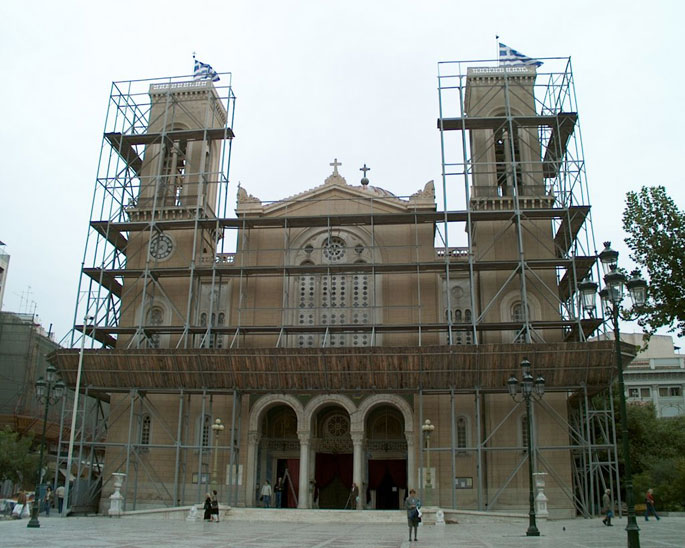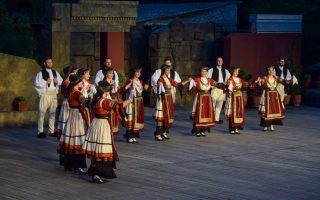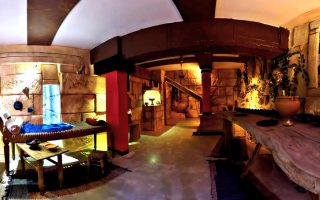Dedicated to the Annunciation of the Mother of God, The Athens Metropolitan Cathedral was built between 1842 and 1862, its three-aisled, domed basilica overlooking a street with the same name. Located a short distance from Syntagma square, its design and construction was enhanced by the many famous architects who contributed their time and talents; Hanssen, Zezos, Boulanger, Kalkos and others. Additionally, numerous fine artists worked on both the exterior and interior decoration of the temple. Architectural materials and decorative pieces from derelict, byzantine churches and churches razed for archaeological reasons were also used in the Cathedral’s construction.
Since its inauguration, the Athens Cathedral has remained the site of many significant ceremonies, from the weddings of Kings, to funerals of important political and social figures. Following the massive earthquake that shook Athens in 1999, the Cathedral has been undergoing continuous maintenance and restoration. Services are therefore being temporarily held in the Church of St. Dionysius, in Kolonaki. The Cathedral houses the marble shrines containing the holy remnants of Agia Filothei and the Patriarch Gregorius V.
Source: www.athensattica.gr
After many intrigues and adventures, the Athens Catholic Church was finally erected, at the junction of Panepistimiou and Omirou streets. Although the lot had been purchased in 1847, and all necessary studies completed by the distinguished German architect Klenzef, construction on the majestic, three-clite basilica didn’t begin until 1853 and was frequently interrupted due to the lack of funds. Then, in 1858 Lyssandros Kaftantzoglou undertook to resume the work, suggesting that a smaller, simpler version of the church be built, based on the original plans.
 After eliminating the need for a belfry, and employing a more minimalistic approach, one more in tune with existing architectural forms of Athenian Neo-classicism, the church was soon finished. However, its gates didn’t opened until 1865, three years after the ousting of King Otto. Additional work went on until 1875, when the Holy Altar, the entrance, the porch, the nearby archbishop’s residence, and other secondary buildings had been added to the complex. The vitreaux decorations were built in Munich, in the late 19th Century, and even more improvements were subsequently added. After 1960, an extensive restoration was performed in order to return the church its original form.
After eliminating the need for a belfry, and employing a more minimalistic approach, one more in tune with existing architectural forms of Athenian Neo-classicism, the church was soon finished. However, its gates didn’t opened until 1865, three years after the ousting of King Otto. Additional work went on until 1875, when the Holy Altar, the entrance, the porch, the nearby archbishop’s residence, and other secondary buildings had been added to the complex. The vitreaux decorations were built in Munich, in the late 19th Century, and even more improvements were subsequently added. After 1960, an extensive restoration was performed in order to return the church its original form.
Source: www.athensattica.gr
- 1
- 2








